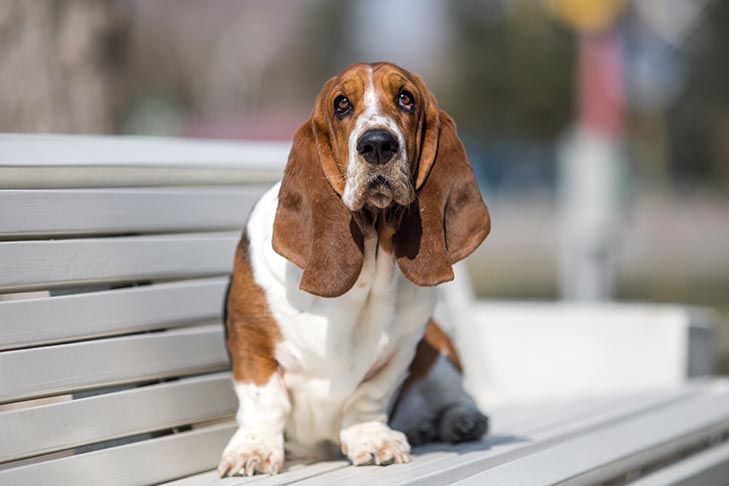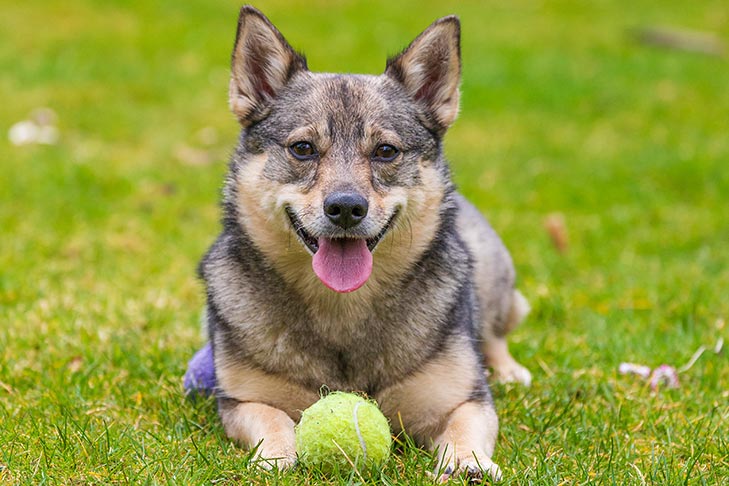
The AKC Canine Good Citizen™ (CGC) program is designed to help you and your dog be the best team you can be. It just takes some positive training and a strong bond. Passing the CGC test will guide you toward responsible dog ownership and help prepare your dog for further training like AKC Trick Dog or AKC Therapy Dog. But perhaps most importantly, it will teach your dog useful life skills that will benefit you both no matter where you are or what you’re doing.
Passing the CGC Test
Your part of the CGC course is taking the Responsible Dog Ownership pledge, a promise to provide for your dog’s safety, health, and quality of life. Your dog’s part is to pass a 10-skill test that focuses on obedience, manners, confidence, and social skills. The test items are:
- Allowing a friendly stranger to approach.
- Sitting politely for petting.
- Accepting grooming/an examination from somebody other than the owner.
- Walking on a loose leash.
- Walking politely and under control through a crowd.
- Sitting and lying down on cue and staying in place.
- Coming when called.
- Reacting politely to another dog.
- Reacting calmly to a distraction such as a dropped chair.
- Reacting calmly to supervised separation from the owner.
Handling Your Dog
Your goal is to teach your dog to enjoy your touch. Train when your dog is already relaxed, and pair gentle touch with something your dog loves, like chicken or cheese. Touch first, then offer the reward, so your dog comes to see that your touch predicts something wonderful is about to happen. As your dog gets more comfortable you can move to more sensitive areas, like the ears and mouth, and more invasive examination.
Handling Your Dog for the CGC Test
In this context, handling refers to restraining and examining your dog for tasks such as tick removal or nail trims. In fact, skill number three (accepting grooming) is testing exactly that. But skill number two (sitting for petting) also relies on your dog being comfortable with pats and touches from a stranger.
Handling Your Dog as a Life Skill
Teaching your dog to enjoy or at least tolerate restraint and examination will make life less stressful. Your dog will experience less anxiety from routine tasks like teeth brushing. And having your dog’s cooperation will make your life easier too. Plus, others who work with your dog, such as groomers and veterinarians, will thank you for your efforts because you’ve made their job safer and easier.

Getting Your Dog to Pay Attention to You
You can teach your dog to look at your face using lure-and-reward training. Simply move a rewarding treat from your dog’s nose to between your eyes. Your dog will naturally follow the treat and end up staring at your face. You can also capture attention your dog gives you spontaneously. Whenever your dog is focused on you, reward and praise so your dog learns that attending to you can lead to good things.
Attention Skills for the CGC Test
Certain CGC skills rely on your dog paying attention to you, rather than the world at large. Skills five (walking through a crowd) and eight (reacting to another dog) will be easier if your dog is focused on you. Directing your dog’s attention will also help with skill one (allowing a stranger to approach) and skill four (walking on leash). Finally, skill nine (reacting to distraction) will be easier for your dog if your dog is concentrating on you, over whatever has been chosen as a distraction.
Helping Your Dog Focus as a Life Skill
If your dog isn’t looking at you, your dog is likely not paying attention to you either and will be far less responsive to your requests. With a cue like “Watch Me” or “Look,” you can teach your dog to focus on you when asked. Plus, using an attention cue allows you to redirect your dog’s concentration away from distractions.
Leaving Your Dog by Themselves
Start your alone time training with short periods of time and limited space, like one room or a crate. Give your dog something fun and safe to do, like emptying a food stuffed toy, so they learn appropriate ways to pass the time. As your dog gets more comfortable being alone, you can add more freedom and extend the time.
Separation Anxiety for the CGC Test
Skill 10 involves your dog reacting calmly to your absence. For some dogs that’s easy, but for others separation from their owner can cause stress and anxiety. Teaching your dog to feel comfortable alone will make this test a breeze.
Helping Your Dog Through Separation Anxiety
No matter how hard you try, there will be times you have to leave your dog alone. Every dog needs to learn to entertain themselves in an appropriate way whenever they’re alone. For example, your dog might love ripping your cushions to shreds, but you won’t be pleased. Alone time training is also an important step in preventing separation anxiety.
Helping Your Dog Manage Distractions
Start with small distractions and work your way up. You want to set up your dog for success because every time the distraction wins, your dog practices ignoring you. It’s also important to match your rewards to the distraction you’re competing against. You can use kibble if the distraction is relatively boring, but ignoring a squirrel deserves something amazing.
Managing Distractions For the CGC Test
Distractions make it harder for your dog to listen and respond to you. Many CGC skills benefit from teaching your dog to ignore distractions, but consider skills six (staying in place) and seven (coming when called) in particular. Your dog needs to ignore the evaluator and everything else happening in the testing environment and stay when asked or come straight to you when called.
Helping Your Dog Respond Appropriately
It’s no good if your dog is only obedient in the quiet of your living room. You need to rely on your dog’s responses no matter where you are or what is going on around you. The world is an exciting and overwhelming place, so teaching your dog to tune out distractions and focus on you is essential for manners and obedience.

